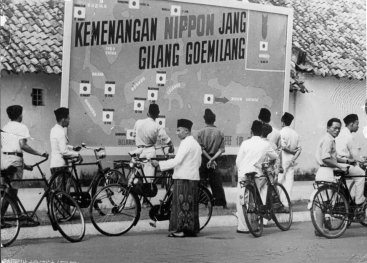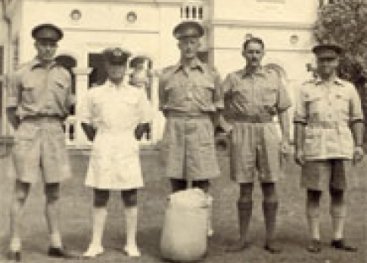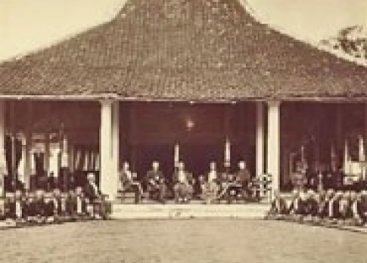
Preparing for war
10 May 1940
On 10 May 1940, Germany invaded the Netherlands. The Dutch in the East Indies were shocked. Members of the Dutch National Socialist Movement (NSB) and Germans living in the East Indies were immediately imprisoned as enemies. Contact with relatives in the Netherlands was no longer possible. The Dutch government moved to England. In the East Indies, Dutch nationals and Dutch East Indians organised all kinds of aid campaigns in support of the government in exile. They raised funds for the war effort, collected aluminium and knitted clothes for the allied soldiers.
Japan
The Dutch East Indies government prepared for the war to spread to Asia. Japan was an ally of Germany, and threatened to attack the East Indies. All Dutch and Dutch East Indian people became eligible for civil conscription, and the KNIL (Royal Dutch East Indies Army) boosted its forces. Trenches were dug and air-raid shelters built. After a KNIL parade, the Bataviaasch Nieuwsblad newspaper confidently headlined ‘The East Indies are prepared!’ (‘Indië is paraat!’).
Personal stories - In an uproar
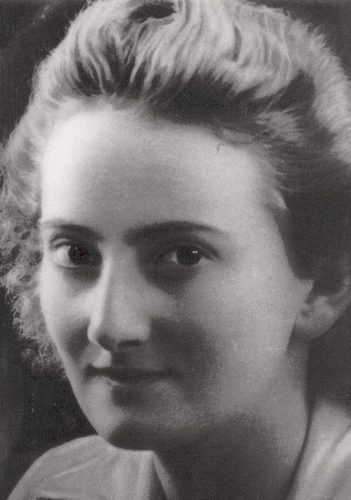 The reports about the German invasion of the Netherlands in 1940 hit the Dutch in the colony hard.
The reports about the German invasion of the Netherlands in 1940 hit the Dutch in the colony hard.
"The German invasion of the Netherlands was a terrible shock. The whole of the East Indies was in an uproar, because the mother country was in danger. Women started knitting socks for the troops, made rolls of bandages and collected money for the Spitfire Fund and the Red Cross. I went to church every day for months to pray for the Netherlands.”
Bep Stenger
Tea for the Netherlands
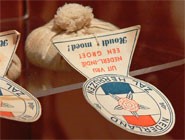
In 1941, bombers dropped thousands of tea bags from the Dutch East Indies over the occupied Netherlands.
“I forgot to say that the 75,000 pouches of tea sent to me from the Dutch East Indies with the label: ‘The Netherlands will recover. Greetings from the Free Dutch East Indies: Keep your spirits up’, were dropped over ten cities in the Netherlands in the nighttime between 20 and 28 March by R.A.F. bombers on their way to Germany. It wasn’t easy to organise, but the news was received with great enthusiasm in the East Indies.”
G.H.C. Hart, a civil servant for the Dutch government in London, in his diary:
Air-Raid Defence
Schoolboys were deployed in the Civic Guard (Stads- en Landwachten) and in the Air-Raid Defence (Luchtbeschermingsdienst, LBD). The LBD had to protect buildings and people from enemy air-raids.
“I had to serve with the Air-Raid Defence service about twenty percent of my school hours. Together with the other boys in my school, I had to guard the command post building. I also had to ensure that all the pupils in my school went to the air-raid shelter in the event of an air-raid.”
Schoolboy Tolly Thijssen
Rolling up the sleeves
Women were also preparing for a Japanese attack. They were deployed in the Commission for the Organisation of Women’s Work during Mobilisation (Commissie voor de Organisatie van Vrouwenarbeid in Mobilisatietijd, COVIM), the Women’s Automobile Corps (Vrouwen Automobiel Corps, VAC) or the Red Cross.
“All the wives of navy officers were obliged to take part in the COVIM. I didn’t really want to. I got my first-aid certificate during that time. That knowledge came in very useful during and after the war.”
Wieke Asjes-Holman
Military parades
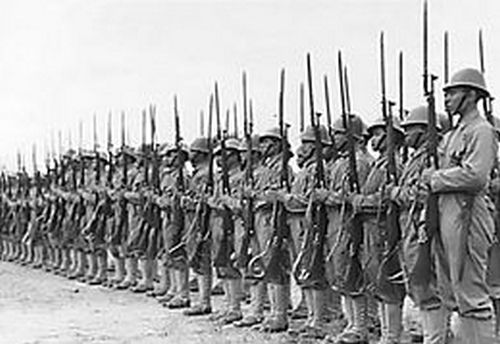
The Dutch and Dutch East Indians had great faith in their armed forces. The KNIL showed off its arms and soldiers during parades. As a 12-year-old, Ben Rietveldt was impressed: “Those military parades were very impressive: men with rucksacks and converted armoured cars. You got the idea that it was such a powerful army, we would never be beaten.”
